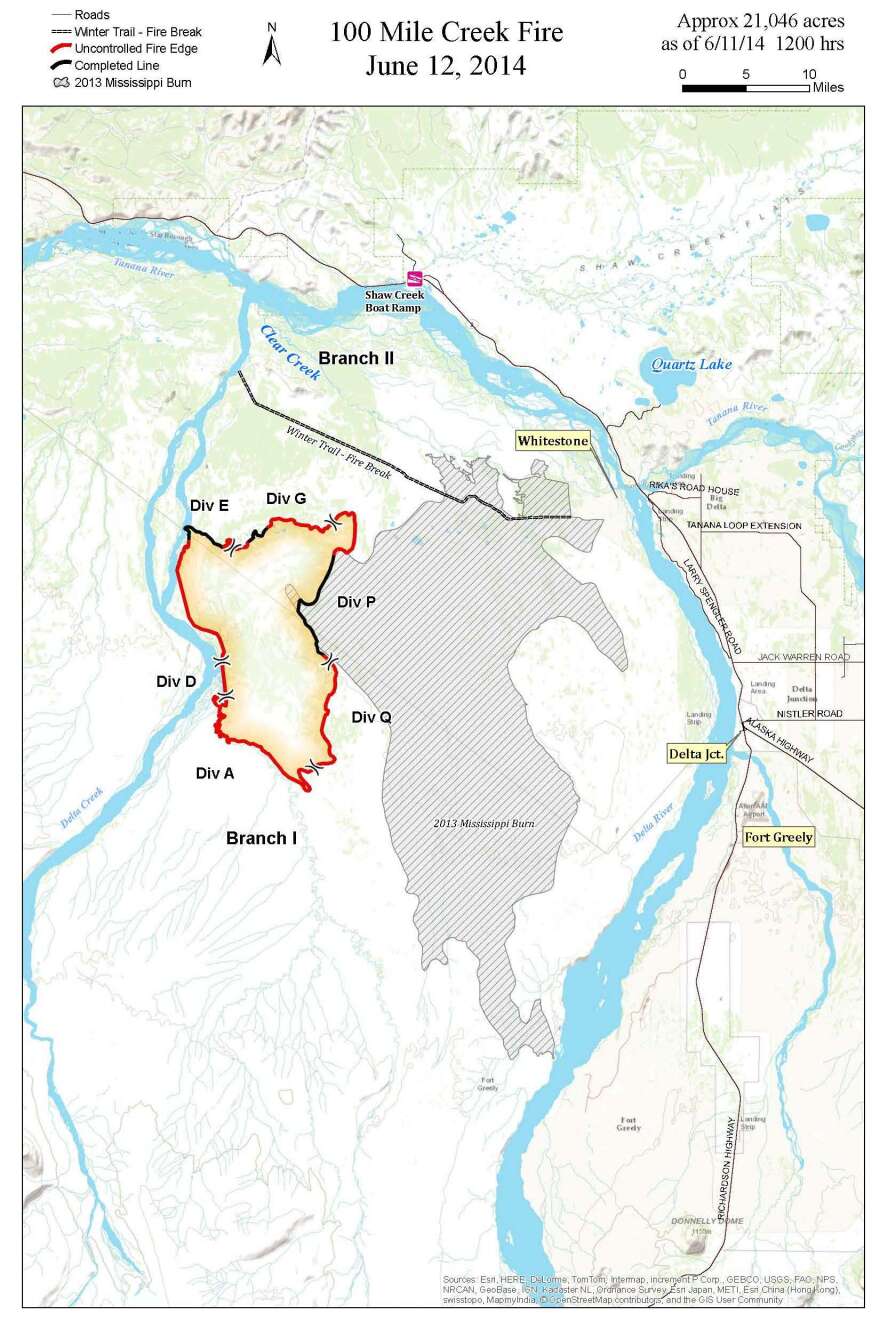Updated: State Forestry officials said this morning that the 100-Mile Creek Fire is now 50 percent contained.
State and federal fire officials say they think they’ve got a handle on the 100-Mile Creek fire, burning mainly on military training land west of Delta Junction. But the officials say they won’t know for certain until they see how their fire lines hold up after high winds blow through the area later today.
Officials with the top-level interagency fire-management team that assumed command of the 100-mile Creek fire on Wednesday say firefighters had contained about 5 percent of the 21,000-acre wildfire burning west of the Delta River.
Spokesman Pete Buist says that’s partly because of cooler weather and intermittent showers that have set in since the weekend. And partly because of a surge in firefighters, totaling about 400 now, and equipment, especially aircraft, over the past few days.
Buist says those resources may be tested today, if high winds forecast for the area materialize – especially if they’re like those that whipped-up the wildfire Saturday, growing the fire exponentially and kicking up a towering smoke cloud that descended on Delta Sunday.
“We’re always concerned with weather that can affect a fire,” he said. “And wind is obviously a big one – particularly here, where we have a south wind screaming through Isabel Pass. That’s why the fire moved the way it did a few days ago.”
But for the most part, Buist and other officials with the Type 1 Incident Management Team gave a generally upbeat assessment of their suppression efforts.

They told the dozen or so people at a community meeting in Delta on Wednesday evening that they’re confident the fire won’t threaten Whitestone Farms, a faith-based community of about 100 west of the river at Big Delta. Buist says that’s because of all the resources poured into the fire, especially along the northern perimeter. And because the 2013 Mississippi Fire burned-off most of the vegetation in the area between Whitestone and the 100-mile Creek Fire.
“Whitestone is obviously on our radar,” he said, “but from a fire-danger standpoint, this fire would have to burn through the burn scar of the Mississippi Fire from last year, where there’s almost no burnable fuel left.”
Buist says smokejumpers and other firefighters also are working to keep the blaze from spreading into an area near Clear Creek just south of the Tanana River near Shaw Creek. That would threaten cabins and other holdings.
But Buist says Delta-area residents are probably just going to have to put up with smoke on-and-off through the rest of the summer. Because once the 100-mile Creek Fire is contained, hotspots will most likely continue to pop up and smolder. And he says Army officials have said they’ll let those hotspots burn, as long as they don’t threaten Army facilities or private property adjacent to the training ranges.
Delta City Councilwoman Audrey Brown, who sat in on the meeting, says the briefing made her feel at least somewhat better about the short-term prospects of the area’s air-quality.
“I feel a little reassured that the heavy smoke that we had come in Sunday night probably won’t reoccur, unless there’s a big wind shift,” Brown said.
Incident-management team officials say they’ll schedule another meeting Friday if area residents say they’d like another update.
Editor's Note: This post revises the degree of containment reflected in the original story produced Wednesday. Fire officials said Thursday morning that the fire was 50 percent contained.



